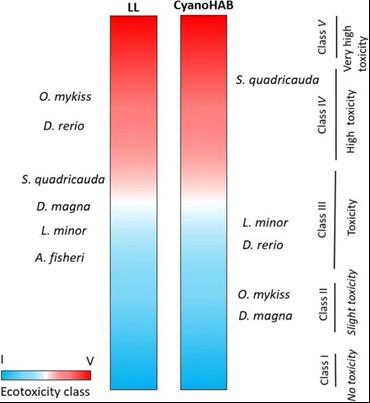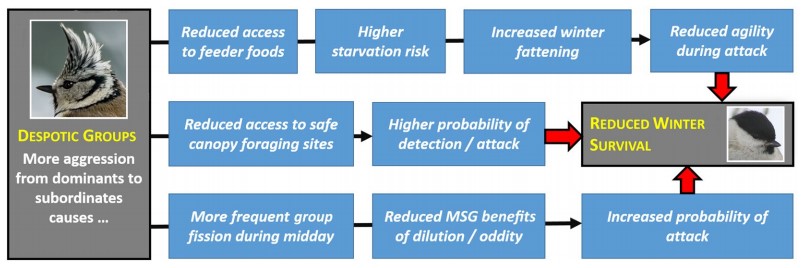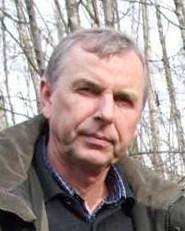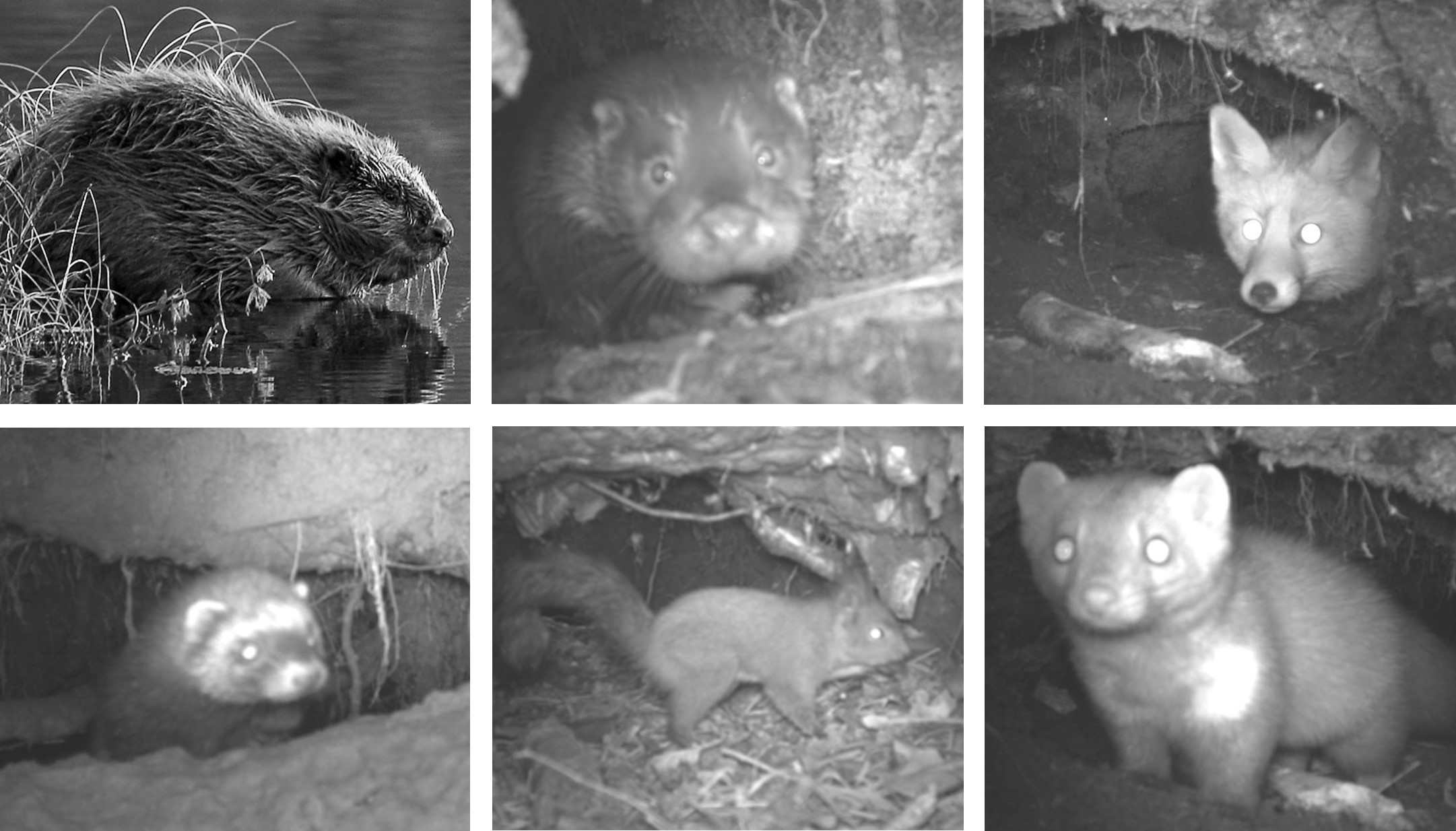|
ALIUS ULEVIČIUS |
|
Environmental Assessment & Ecosystem Development
Our main research goal is the impact of various anthropogenic and natural stress factors on ecosystem state dynamics and environment assessments. During the last decades, the ecosystem development is influenced by drastic changes in the socioeconomic and political systems. Anthropogenic and natural factors may adversely shape the present state and the perspectives of ecosystems in terms of their structure and material cycling. Restoration of disturbed ecosystems and its interferences with the anthropogenic pollution load have to be evaluated and understood. Anthropogenic pollution sensu lato also includes the introduction of alien biotic components and their impacts. Wildlife-vehicle collisions (WVC) are of socioeconomic and ecological importance. We develop spatially explicit and other models how to predict and prevent WVC in anthropogenized landscape. Among natural factors, we focus on keystone species that are able to shape the ecosystem structure and function at different spatial scales. Assessment of the pollution of ecosystems requires reliable markers. We test the toxic impacts of the environmental pollutants on ecosystems using tests of luminescent microorganisms and biomarkers. The origin and migration of different pollutants through various environments may enable proper preventive means. Introduction of alien species provokes new info chemical interactions and changes in the behaviour of organisms, which leads to reorganization of the functional groups within the impacted ecosystem.
Our interdisciplinary team has contributed to different methods and different levels of ecosystem organization. Toxicity of various environmental samples from different contaminated sites (e.g. landfill leachate, phytoplankton biomass of eutrophicated water bodies, wastewater, lake sediments) using luminescent bacteria test (ISO 11348-3:2007) was evaluated [1]. Hierarchical organisation of mixed-species groups of wintering birds was found important for winter survival in a not-disturbed forest environment [2]. Ungulates (mainly Cervidae and wild boar Sus scrofa) are considered among the most problematic wildlife suffering on roads and causing the largest material losses due to high densities of ungulate populations, spatial and temporal movement patterns of these animals. Our study documents the relationship between roe deer – vehicle collisions (RDVC) and season of the year with the highest RDVCs peaks occurring in late spring and late autumn [3]. In collaboration with the Natural Resources Institute, Finland (Luke), genetic structure of reintroduced Eurasian beaver Castor fiber was assessed. Results discover very different genetic structure and diversity among Scandinavian and other European beaver populations suggesting specific means of conservation [4]. Moreover, these populations demonstrate different ecological patterns of feeding behaviour [5].
SELECTED PUBLICATIONS
- Montvydienė, D., Šulčius, S., Jurgelėnė, Ž., Makaras, T., Kalcienė, V., Taraškevičius, R., Kazlauskas, M., Kazlauskienė, N. Contrasting ecotoxic effects of landfill leachate and cyanobacterial biomass on aquatic organisms. Water Air and Soil Pollution. 2020, 231 (7): 323.
- Krams, I. A., Luoto, S., Krama, T., Krams, R., Sieving, K., Trakimas, G., Elferts, D., Rantala, M. J., Goodale, E. Egalitarian mixed-species bird groups enhance winter survival of subordinate group members but only in high-quality forests. Scientific Reports. 2020, 10(1): 4005.
- Ignatavicius, G., Ulevicius, A., Valskys, V., Trakimas, G., Galinskaite, L., Busher, P. E. Temporal patterns of ungulate-vehicle collisions in a sparsely populated country. European Journal of Wildlife Research. 2020, 66(4): 58.
- Iso-Touru, T., Huitu, O., Tapio, M., Kucinskiene, J., Ulevicius, A., Bukelskis, E., Tirronen, K., Fyodorov, F., Panchenko, D., Saarma, U. Low genetic polymorphism in the re-introduced Eurasian beaver (Castor fiber) population in Finland: implications for conservation. Mammal Research. 2020, 65(2): 331–338.
- Busher, P. E., Mayer, M., Ulevičius, A., Samas, A., Hartman, G., Rosell, F. Food caching behavior of the Eurasian beaver in northern Europe. Wildlife Biology. 2020, 2020(3): wlb.00734.
Ecotoxic Effects of Landfill Leachate and Cyanobacterial Biomass on Aquatic Organisms
The effect of landfill leachate (LL) and cyanoHAB biomass on test organisms was concentration- and trophic-level-dependent, and in the case of fish, development stage-dependent. The secondary consumer Oncorhynchus mykiss and larvae of the Danio rerio proved to be most sensitive to LL additions, while Scenedesmus quadricauda, representing primary producers, to cyanoHAB exposure. The overall ecotoxic effect of both mixtures on the tested organisms varied from low (Class II) to high (Class IV). This study highlights complex and unambiguous effects of LL and cyanoHAB biomass on aquatic organisms [1].

Potential toxicity of LL and cyanoHAB biomass according to their effects on aquatic organisms. For LL (A. fischeri < L. minor < D. magna < S. quadricauda < larvae of D. rerio ≤ O. mykiss (larvae ≤ fry ≤ juveniles ≤ adults)) and for the biomass of cyanoHAB (D. magna = O. mykiss fry < D. rerio < L. minor < S. quadricauda)
Winter Survival of Subordinate Group Members of Egalitarian Mixed-Species Bird Groups in High-Quality Forests
Birds often live in hierarchically organized mixed-species groups (MSGs), in which heterospecific individuals are considered to substitute for conspecifics as protection against predators at a significantly reduced competition cost. A comparison of individuals in the despotic MSGs of crested tits and willow tits revealed a strong negative correlation between subcutaneous fat stores and dominance rank in the interspecific dominance hierarchy. Egalitarian groups of crested tits and willow tits exhibited markedly less within-group aggression and improved winter survival in both tit species. However, winter survival of birds in egalitarian groups was impaired relative to despotic groups in forests recently affected by industrial forestry. This suggests that more egalitarian bird societies may be best adapted to less-disturbed environments [2].

Mechanisms underlying lower subordinate survival in despotic mixed-species groups of crested and willow tits.
Food Caching Behaviour of the Eurasian Beaver in Northern Europe
We studied the food caching behaviour of the Eurasian beaver in three northern European countries (Sweden, Norway, Lithuania). Construction of caches began as early as late September (week 39/40) in Sweden and Lithuania and by mid October (week 42) in Norway. We observed plasticity in timing of cache initiation. Declining air temperature and mean minimum temperatures of 0°C or below were associated with cache initiation. Caches in Lithuania were larger than in Sweden and Norway, which may be associated with colder winter temperatures [5].

Estimated and observed initiation dates of new food caches and mean weekly minimum temperatures at research sites


